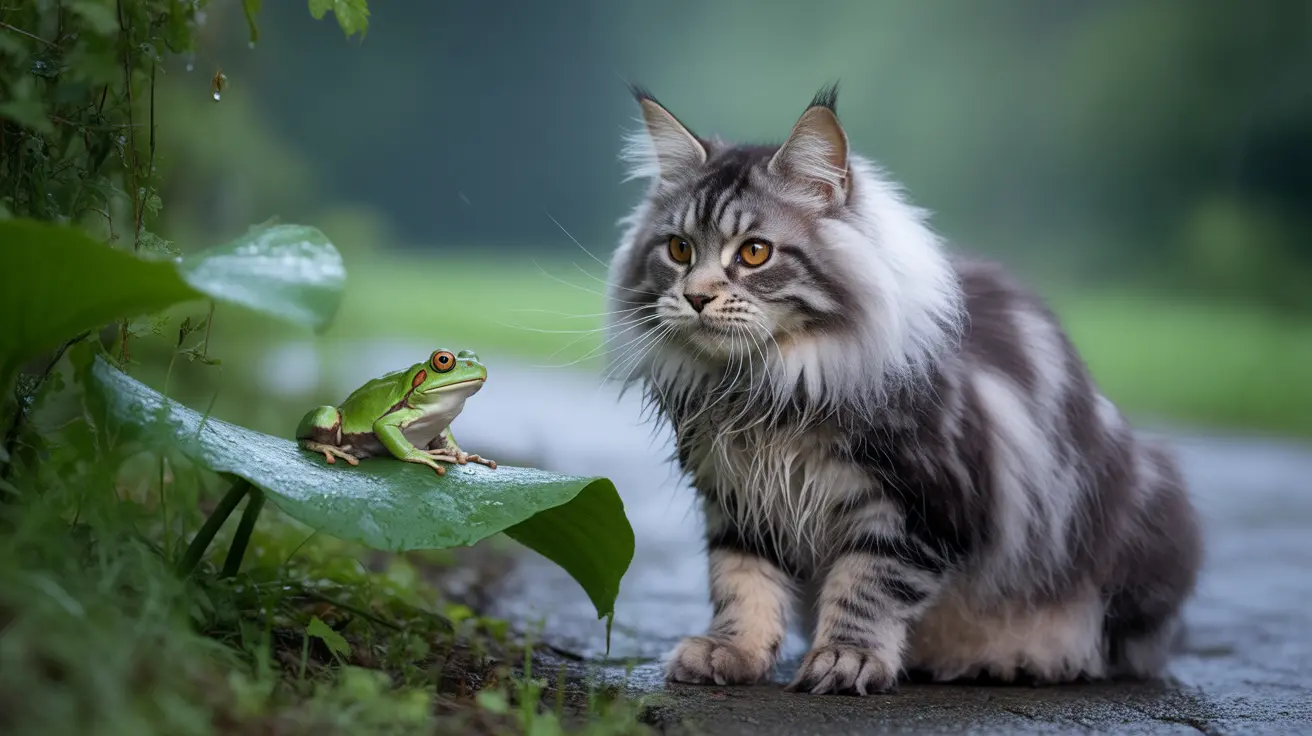Understanding Why Cats Hunt Frogs
Cats are instinctive predators, and the erratic jumping movements of frogs naturally trigger their hunting response. Even well-fed house cats may chase and catch frogs out of pure instinct rather than hunger. This behavior is particularly common during warm, rainy evenings when frogs are most active.
The Dangers of Frog Consumption
Toxic Species Risks
While most common frogs aren't highly toxic, certain species can pose serious health risks to cats. The biggest dangers come from toads rather than frogs, particularly species like the Cane Toad and Colorado River Toad, which can produce potentially lethal toxins.
Common Symptoms of Frog Poisoning
If your cat has encountered a toxic frog or toad, watch for these warning signs:
- Excessive drooling
- Pawing at the mouth
- Vomiting or foaming
- Difficulty breathing
- Irregular heartbeat
- Seizures or disorientation
Health Risks Beyond Toxicity
Parasitic Infections
Frogs can harbor various parasites and bacteria that may affect your cat's health. Common concerns include:
- Liver flukes
- Intestinal parasites
- Bacterial infections like Salmonella
Digestive Issues
Even non-toxic frogs can cause digestive upset in cats, leading to:
- Temporary stomach discomfort
- Diarrhea
- Loss of appetite
- Vomiting
Prevention and Safety Measures
To protect your cat from frog-related dangers:
- Keep cats indoors during peak amphibian activity hours
- Remove standing water near your home
- Supervise outdoor time in areas known for toxic species
- Consider installing cat-proof fencing
- Maintain regular veterinary check-ups
Emergency Response Guidelines
If you suspect your cat has encountered a toxic frog:
- Gently rinse their mouth with clean water
- Don't force them to drink
- Contact your veterinarian immediately
- Monitor vital signs while en route to emergency care
Frequently Asked Questions
Can cats safely eat frogs, and are all frog species non-toxic to them?
No, not all frogs are safe for cats to eat. While many common frogs are non-toxic, some species can cause serious illness or death. It's best to prevent your cat from eating any frogs or toads.
What are the symptoms of frog or toad poisoning in cats, and how quickly do they appear?
Symptoms can appear within minutes and include excessive drooling, pawing at the mouth, vomiting, difficulty breathing, and seizures. Severe cases can progress rapidly and require immediate veterinary attention.
How can I tell the difference between a frog and a toxic toad to protect my cat?
Toads typically have dry, warty skin and are more terrestrial, while frogs have smooth, moist skin and are usually found near water. However, it's safest to keep cats away from all amphibians.
What should I do immediately if my cat bites or eats a toxic toad?
Rinse your cat's mouth with water to remove toxins, avoid forcing them to drink, and seek immediate veterinary care. Time is critical in cases of toad poisoning.
Are there any parasites or infections my cat can get from eating frogs?
Yes, frogs can carry parasites like liver flukes and bacteria such as Salmonella. These can cause various health issues ranging from digestive problems to more serious infections.
Understanding the risks associated with cats eating frogs is crucial for keeping our pets safe. While not every frog encounter will result in serious harm, the potential dangers make prevention the best approach. Keep your cat supervised outdoors and contact your veterinarian immediately if you suspect they've encountered a toxic amphibian.






